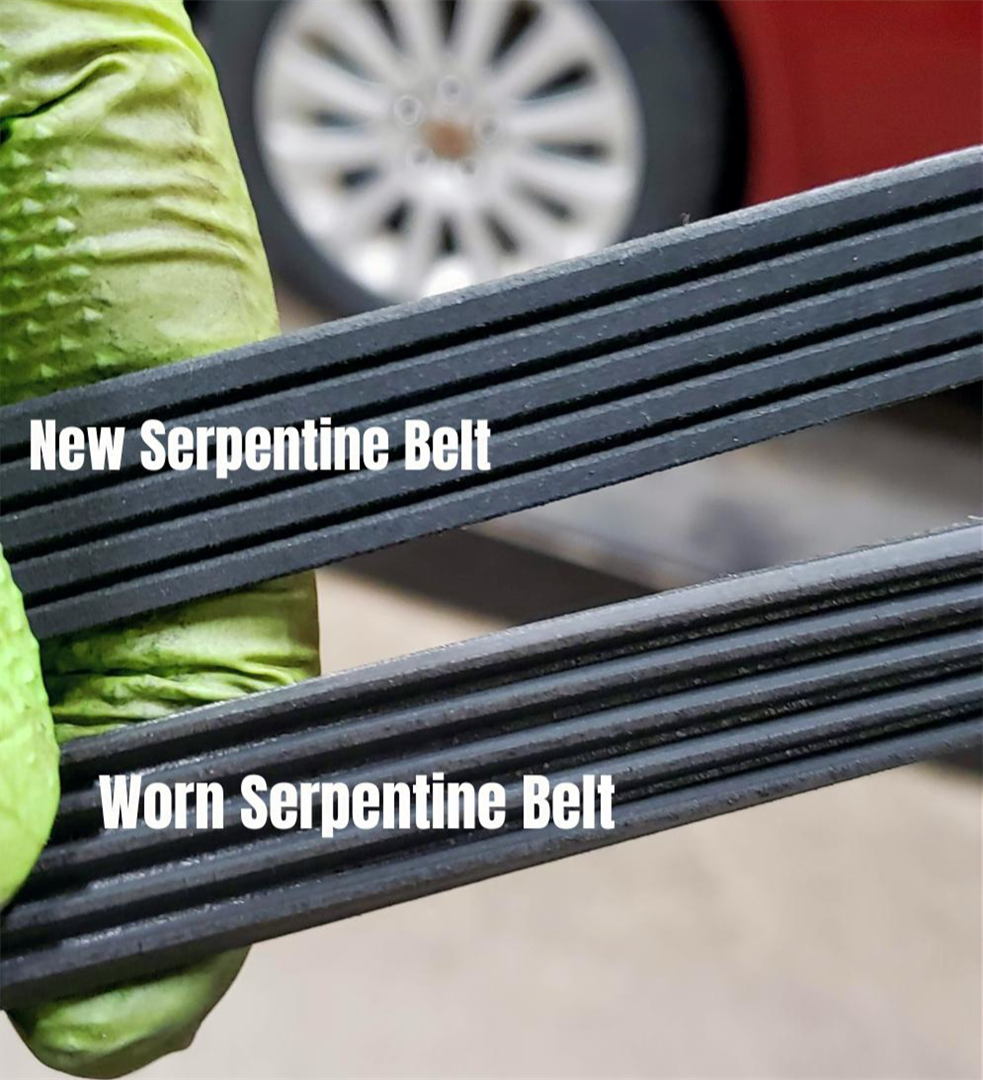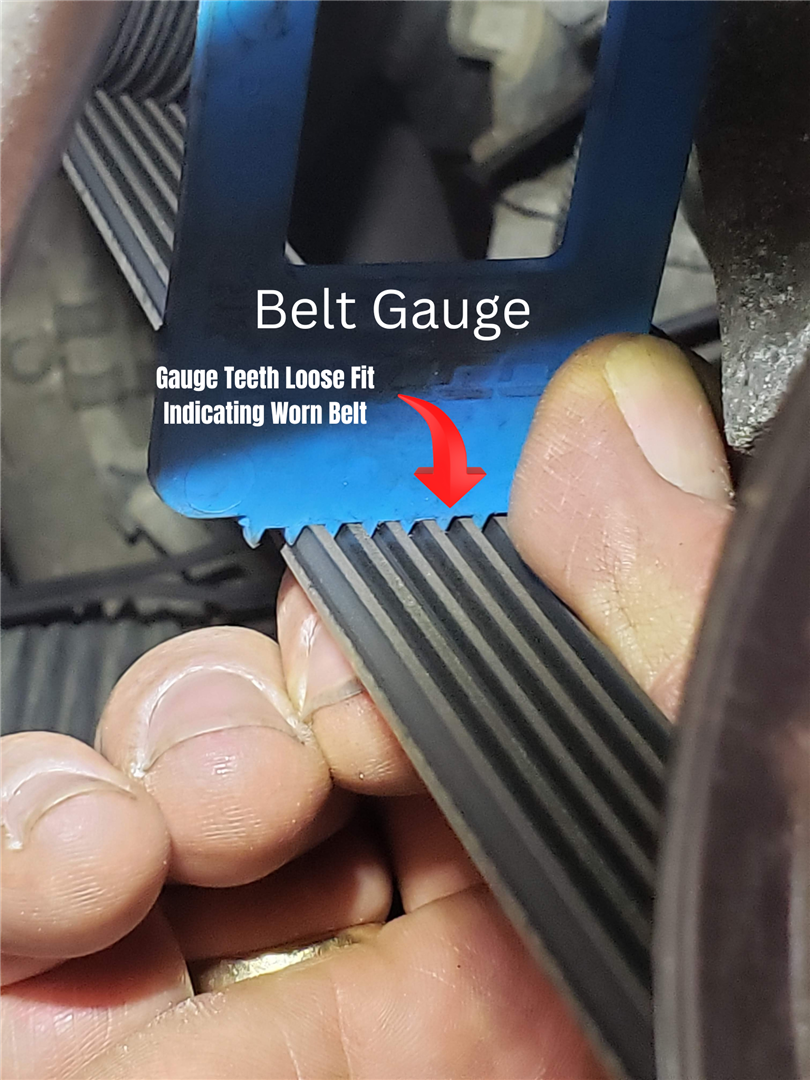Serpentine Belt Replacement in Concord, NH – What’s a Serpentine Belt?
We often get asked this question at Accomplished Auto in Concord, NH: “What is a serpentine belt, and why is it important?” Simply put, the serpentine belt is a single, continuous belt that “snakes” around multiple engine accessories, driving them all at once. Older vehicles used separate belts for each component (you might have seen cars with five or six different belts). Modern vehicles replaced those with one efficient serpentine belt – much like combining all your errands into one trip instead of multiple back-and-forth drives. This single belt saves space, reduces maintenance, and improves reliability by using one engine pulley (on the crankshaft) to turn all your accessories at once.
What Does the Serpentine Belt Do?
The serpentine belt powers a lot of important systems under the hood. When your engine is running, the belt is spinning and transferring power to various components, including:
- Alternator – Charges the battery and powers the electrical system while you drive.
- Power Steering Pump in Some Cars – Makes steering easier by providing hydraulic pressure for power steering.
- Air Conditioning Compressor – Drives the A/C system to keep you cool in summer.
- Water Pump – On many vehicles, it circulates coolant through the engine (critical for preventing overheating).
- Radiator Fan – In some cars, the belt also turns a fan to cool the radiator.
- Others – In certain designs, it may run additional items like an air pump or even a vacuum pump for brake assist.
All these components rely on the serpentine belt. If the belt snaps or slips off, those systems will stop working. Your battery will quit charging, steering will become very hard, and the engine can quickly overheat without the water pump. In other words, you won’t get very far if the serpentine belt breaks – when it fails, you essentially lose all your engine-driven accessories at once. That’s why it’s vital to keep the belt in good condition.
Why You Can’t Ignore a Worn Belt
A failing serpentine belt often gives some warning signs. One common red flag is noise – a high-pitched squealing or chirping from under the hood usually means the belt is slipping. (A good belt generally shouldn’t slip or squeal under normal operation.) Other symptoms include power steering issues (heavy steering if the pump isn’t being driven at full speed) or your battery warning light coming on (if the alternator isn’t charging due to belt slippage). In older types of belts (made of neoprene rubber), you might also see visible cracking, fraying, or splits in the belt. If you notice any cracks in the ribs, frayed edges, or missing chunks, the belt needs replacement right away. However, many newer belts won’t show obvious cracks even when they’re worn out.
Modern serpentine belts are made from a longer-lasting EPDM rubber compound (ethylene propylene diene monomer). This material is great because it resists cracking – but it also means a worn EPDM belt can look “perfectly fine” at a glance. Instead of cracking, EPDM belts wear down gradually, just like tire tread wearing down over miles. As the belt wears, the once-sharp “V” shape of its grooves slowly becomes more rounded and shallow, reducing the belt’s grip on the pulleys. In fact, a brand-new serpentine belt has a distinctly V-shaped rib profile, whereas a heavily worn belt’s rib profile starts to look more like a “U” due to material loss.
Cross-section comparison of a new vs. worn serpentine belt. The new belt’s ribs (top) have a deep V shape, while the worn belt (bottom) has flatter, shallower ribs (more “U” shaped). This loss of rib material happens with age, even if the belt isn’t visibly cracked.
Because visual inspection isn’t enough, professional mechanics use a serpentine belt wear gauge to assess belt condition. This is a simple plastic tool with teeth or a bar that fits into the belt’s grooves. By inserting the gauge into the rib grooves, we can literally measure how much material is worn away, similar to using a tread-depth gauge on a tire.
A technician checking a belt with a wear gauge. If the gauge’s teeth sit flush with the top of the belt (no gap), the grooves are worn down and the belt needs replacement. If there’s a visible gap and the gauge doesn’t fully bottom out, the belt is still within service limits.
the grooves are worn down and the belt needs replacement. If there’s a visible gap and the gauge doesn’t fully bottom out, the belt is still within service limits.
Using a gauge is important because an old EPDM belt can drive quietly without any squeals, yet still be too worn to do its job. If the grooves are too shallow, the belt can start slipping on the pulleys without making much noise. That slippage generates heat and puts extra strain on your alternator, power steering pump, A/C compressor, and other components. In extreme cases, a slipping or worn-out belt can overheat and damage these parts (for example, melting an idler pulley or damaging the alternator bearings). For this reason, replacing a worn belt in time can save you from more expensive repairs down the road. It’s a small investment that protects larger components.
When to Replace the Serpentine Belt (and Tensioner)
So, how long does a serpentine belt typically last? It varies by vehicle and usage, but thanks to improved materials, a new serpentine belt can often run for tens of thousands of miles. In fact, many can last around 60,000–100,000 miles before needing replacement. However, that doesn’t mean you should just ignore it until 100k miles. Most manufacturers have a recommended interval for belt inspection – often starting around 50,000 to 60,000 miles, and then at regular intervals thereafter. We advise keeping an eye on it (or letting our technicians check it) once you pass the 5-year or ~50,000-mile mark. If any wear indicators show up – or if you hear squeaks and see glazing on the belt – it’s wise to replace the belt before it fails. Heat, weather, and driving conditions in New Hampshire (from hot summers to freezing winters) can all affect belt longevity, so regular check-ups are key.
Whenever a serpentine belt is replaced, it’s highly recommended to replace the belt tensioner at the same time. The tensioner is a spring-loaded pulley that keeps the correct tension on the belt automatically. Over time, tensioners wear out and can weaken or seize. A weak tensioner might let the belt slip, and a seized tensioner can chew up a new belt pretty quickly. For this reason, belt tensioners are considered a wear-and-tear item – it’s good practice to change the tensioner along with the belt. By installing a fresh tensioner, you ensure the new belt stays tight and runs smoothly, which helps maximize the belt’s lifespan and prevents squeaking or slipping issues.
Friendly, Local Serpentine Belt Service in Concord, NH
Maintaining your serpentine belt is an essential part of keeping your vehicle reliable, but it doesn’t have to be confusing or inconvenient. At Accomplished Auto, our friendly technicians are happy to check your serpentine belt and explain in simple terms how it’s holding up and whether it might need replacement. We believe in making car care easy to understand for everyday drivers. If your belt does need to be replaced (or even if you’re not sure and just want it inspected), we’ve got you covered with quick, professional service.
Accomplished Auto has been helping drivers in Concord, NH and surrounding towns like Bow, Hopkinton, Webster, Penacook, Pembroke, Loudon, and more for years. We can inspect your serpentine belt, replace it if needed, and get you back on the road with confidence. Replacing a worn belt and tensioner at the recommended interval will give you peace of mind and help prevent unexpected breakdowns on the highway.
Is it time to have your serpentine belt checked or changed? Give us a call at (603) 226-6630 or swing by our shop at 134A Hall St., Concord, NH. You can also visit our Belts and Hoses service page for more information about our serpentine belt replacement services. We’ll make sure your vehicle’s belt (and all the components it powers) are in top shape – keeping you and your family safe on the road!